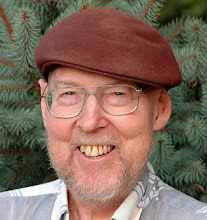| What does a restaurant chain specializing in breakfast and lunch have in common with a nonprofit that provides supports to adults with developmental disabilities?
Both focus on offering a treasure that folks seek over and over again.
It’s not easy for a business to discover the treasure that will keep its customers coming back nor is it easy for nonprofits to discover the treasure that transforms the lives of those who use their services.
For years the nonprofit, Horizon House, Peru, IL defined itself as an organization that makes it possible for adults with developmental disabilities to choose where they want to work, where and with whom they want to live, and what kind of recreation they want to enjoy. Recently Jim Monterastelli, HH CEO, gathered his board and management staff to review their mission. The conversation revealed a drawback to focusing on offering choices to their clientele. The limited intellectual abilities of people with developmental disabilities means they have a limited understanding of the options they might choose from.
As the conversation progressed someone suggested that HH help the people they serve discover options to increase the array of choices they make.
Jim immediately recognized the treasure in the word discover. Horizon House could offer a variety of experiences to help their clientele discover the types of living arrangements, types and places of work, and types of recreation available in their community. As the people Horizon House works with discover their options their choices will be deeper and more genuine. The treasure that an organization offers needs to connect with the deepest, most compelling needs of those the organization serves.
A couple Sundays ago I read in the menu the treasure offered by First Watch in St. Louis, a restaurant that specializes in breakfast and lunch. The treasure was not the food. It was a great, reasonably priced breakfast but we could have found similar food in lots of restaurants.
No, the treasure was in the First Watch promise: The staff of First Watch promise to do everything possible to make your visit a moment of relaxation in a busy day. Meeting special needs or requests that you might have gives First Watch a chance to be a special restaurant. Let us know how we can be of service to you and we promise that we will go that extra mile to make you smile. (c) I read that and immediately was touched. I was on vacation and looking for relaxation. Usually I feel like I’m imposing if I make a request. Here was a restaurant that invited me to make special requests.
I spend a lot of my time going the extra mile to make people smile. Like writing this e-letter at 8:30 at night because you, my readers, deserve the treasure of this e-letter today.
And this restaurant wanted to go the extra mile to make me smile.
How do you discover your organizations treasure? Here are four questions for you and your organization to ponder? - Who are the people that want the treasure your organization offers?
- What do they urgently want to avoid? (Bad food in a restaurant; other people always deciding for you if you have a developmental disability)
- How can your organization make sure people avoid what they want to avoid?
- What are the compelling desires of the people who are seeking treasure from you? (Wait staff at a restaurant eager to go the second mile for you; nonprofit staff eager to help you discover new options for working, living, and playing, and then helping your choices come true--that’s magic if you are an adult with a developmental disability).
I’d love to hear about the treasure your customers or service recipients find in your organization. Next issue we’ll explore another part of the treasure path--treasuring your employees/staff. Wisdom for the week: Thriving organizations keep polishing their treasure.
Fair thee well, Rich | 
